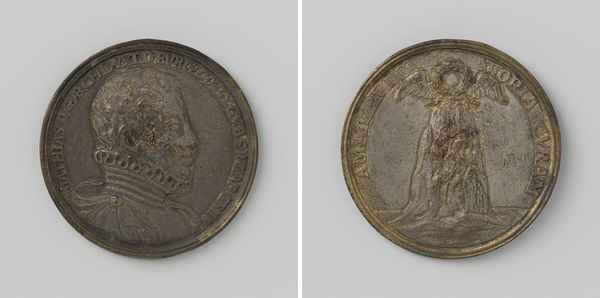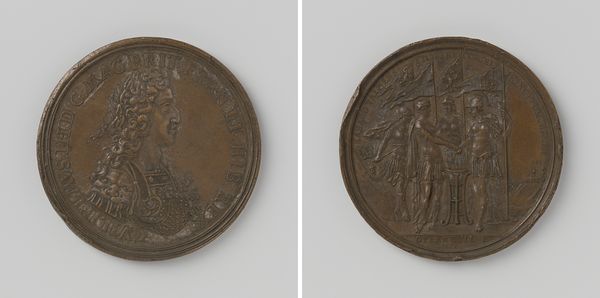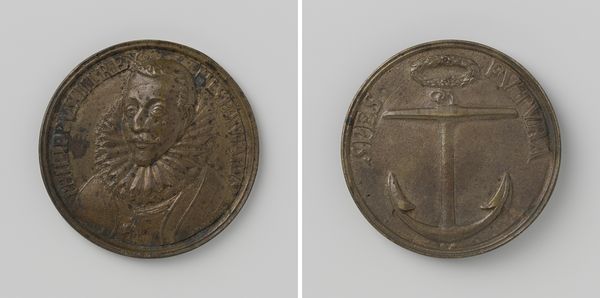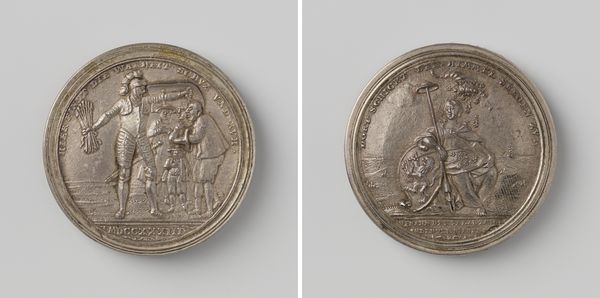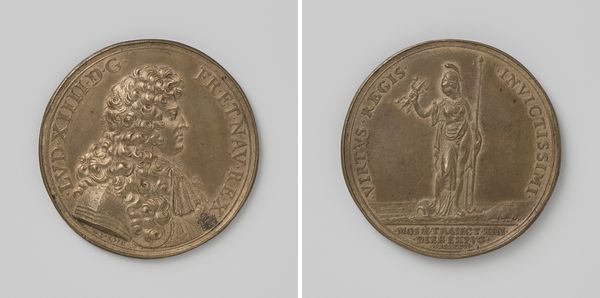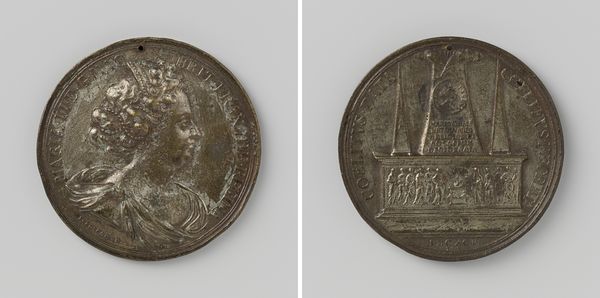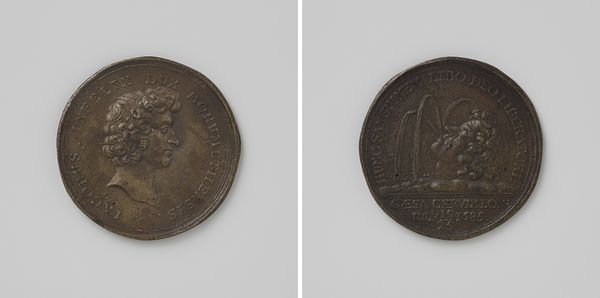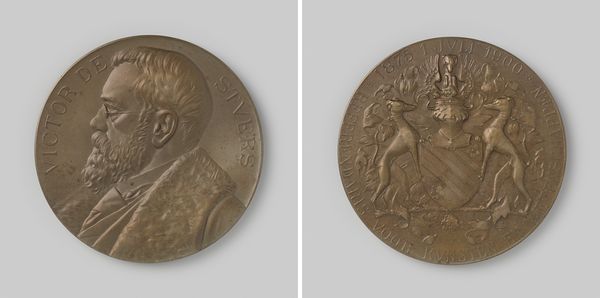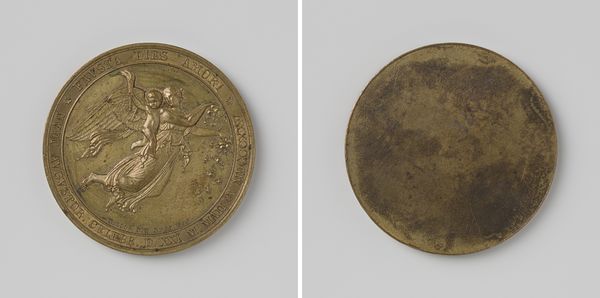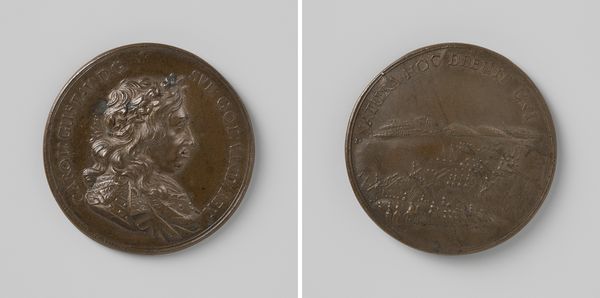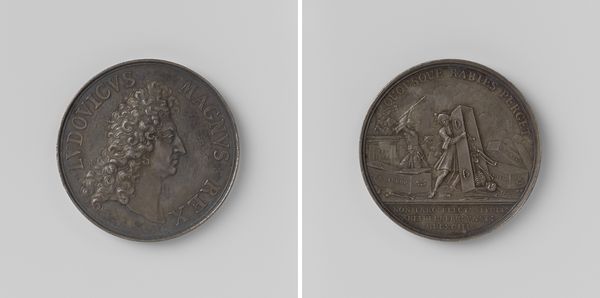
Filips le Roy, heer van Brouchem, lid van de opperste raad der geldmiddelen 1647
0:00
0:00
metal, relief, bronze
#
portrait
#
medal
#
medieval
#
metal
#
sculpture
#
relief
#
bronze
#
11_renaissance
#
history-painting
Dimensions: diameter 4.4 cm, weight 18.81 gr
Copyright: Rijks Museum: Open Domain
Curator: The artwork we’re observing today is a bronze medal from 1647 created by Adriaan Waterloos, titled "Filips le Roy, heer van Brouchem, lid van de opperste raad der geldmiddelen." It depicts Filips le Roy, Lord of Brouchem, a member of the supreme council of finances. Editor: My first impression is of power and privilege. Even in this relatively small, aged form, you get a sense of his authority. Curator: Indeed. Medals such as this were often commissioned to commemorate status, roles, or achievements. As a member of the supreme council of finances, Filips le Roy held a prominent position within society. Waterloos, a skilled medalist, has captured him in profile on one side. Editor: The profile view is classical. I wonder how intentional that association was, particularly given the political undercurrents of the period. Curator: Precisely. By employing established artistic styles, artists like Waterloos reinforced the legitimacy of their subject. We can consider the reverse side, showcasing a coat of arms—a symbolic representation of Le Roy's lineage and social standing. Editor: It’s interesting how medals operate as miniature political billboards, disseminating very particular messages about heritage, power, and, implicitly, exclusion. Look at how the texture creates almost tactile feeling for someone in such a prominent place. I wonder how this played with audiences. Curator: Certainly, these weren’t passive objects; they acted within a framework of social communication and status reaffirmation. These works offer significant information to today’s social art history scholars. We could debate for some time its effect on the shaping and affirmation of oligarchies, privilege, and generational wealth building through the ages. Editor: Absolutely. Understanding the historical and social function of these works sheds light on enduring power dynamics and structures. It really begs the question of whose history we are even taught and shown in the first place. Curator: I find that fascinating! And the very existence of such pieces is inextricably linked to societal notions of rank, legacy, and memorialization. Considering these items in their cultural milieu enriches our understanding of the Renaissance period in its complicated context. Editor: Definitely food for thought. I appreciate how looking at it has challenged my perceptions about how even seemingly small artifacts embody broader historical narratives.
Comments
No comments
Be the first to comment and join the conversation on the ultimate creative platform.
